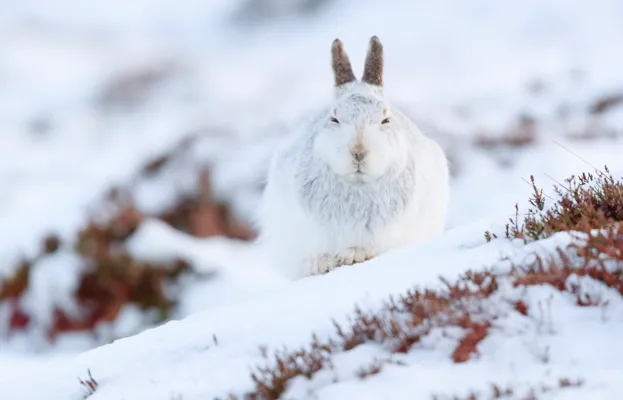Every spring for the last seven decades, scientists have been counting mountain hares on moorlands and neighbouring mountain land in the eastern Highlands in Scotland.
In total, the numbers of native mountain hare on moorland have decreased to less than one per cent of their levels in the 1950s.
The lead author of the study, Dr Adam Watson from the Centre of Ecology and Hydrology, has been monitoring mountain hares since 1943.
“Having reached the age of 88 I am both delighted and relieved to see this paper published,” he says. “I find the decline in numbers of these beautiful animals both compelling and of great concern. We need the Scottish Government and Scottish Natural Heritage to take action to help these iconic mammals of the hill - I hope they will listen to the voice of scientific research."
Following gradual declines on moorlands between 1954 to 1999 of 5 per cent each year, they then found a severe decline in numbers between 1999 to 2017 of over 30 per cent each year.
“These data reveal severe recent declines on grouse moors that are strongly correlated with the start of mountain hare culls for which there is no clear scientific justification,” says Jeremy Wilson, co-author of the paper and head of conservation science for the RSPB in Scotland. “Urgent action is needed if the future conservation status of mountain hares is to be secure.”

However, the Scottish Moorland Group disagrees with the results of the study.
“This research is very much out of kilter with other respected research on mountain hares,” says a spokesperson. “It also flies in the face of what estate owners and land managers see every day on the ground – that hare populations are very high.”
“It should be remembered that mountain hares are only culled when the populations are sufficiently high and culls only control a very small percentage of the population. Culling, which covers a range of activity from shooting for food to habitat protection, is legal and is conducted under a code of practice agreed by the moorland sector.”

